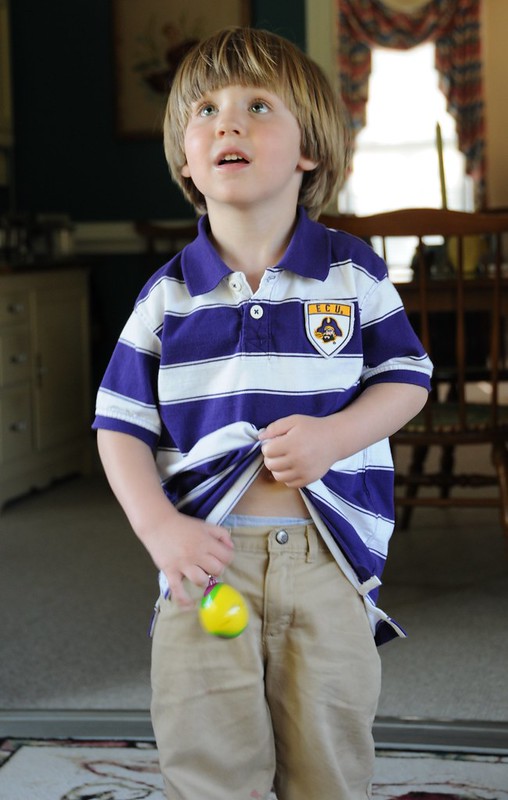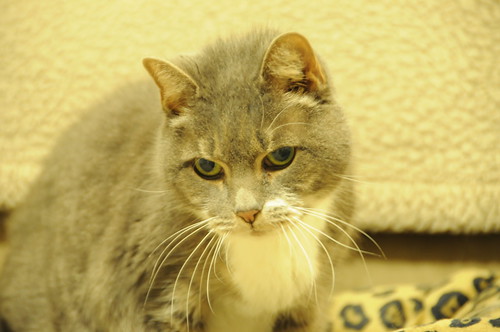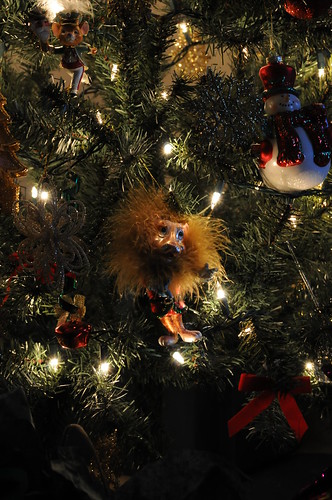 |
| shot at 55mm, ISO 400, 1/15 sec, f/5.6, ambient light only |
I grabbed my camera on Easter while at my aunt's house when my son, Gavin, was running around on her sun porch... excited about the upcoming egg hunt, no doubt! I figured it was going to be a great opportunity for a photograph because the lighting out there was fantastic, no flash needed whatsoever. Nice opportunity to play with the manual settings on my camera.
Now, I must confess...when taking pictures on the fly like this, going completely "manual" is difficult. So what I do in a situation like this is manually set everything like I want it (ISO, aperture, lighting, etc) and I let the camera choose the shutter speed. So I cheat a bit, I admit! But sometimes you have to choose between capturing a once-in-a-lifetime shot (and letting the camera do some of the thinking for you) and missing the shot altogether. Now, when I become an expert photographer I will won't have to rely on any automatic settings...ever. But today is not that day. I wanted to get a nice picture of our boy all excited about this special day.
A couple of things to note about this picture. I wanted to "fuzz" the background a bit so I set the aperture (f-stop) down as low as I could with my lens. This gave me a shallow depth of field, blurring the background. You will find me doing this a lot because a shallow depth of field makes your eyes immediately go to the main subject, which in this case is my son's face.
This allowed me to do something else. Choosing a large aperture (low f-stop number, remember?) allowed a lot of light inside the camera, and in turn gave me a high enough shutter speed to make everything work. If I used a smaller aperture, the shutter speed would have had to be lower (like down in the 1/5 sec range perhaps). Now the more you learn about shutter speed, the more you will realize that slow shutter speeds and energized children do not mix. Had I set the shutter any slower (or allowed it in this case, being the camera was choosing this part automatically) Gavin would have looked like a blur because he was moving around rather quickly. Notice the keychain on his beltloop? It was blurred because he was wiggling and twirling it around, and even at 1/15 of a second (that's .06666667 of a second mind you) I couldn't stop it from moving in the image. But that's okay, it added to the mood or playfulness of the photograph. Nice.
 |
| shot at 200mm, ISO 800, 1/2 sec, f/5.6, ambient light only |
Okay, here's one. This one was shot totally in manual mode (yes even the shutter speed was all me).
This one has a few more challenges due to low light, and quality of the light.
This is a picture of "Kitty", our loyal pussy cat (her name is actually Pepper, but she wouldn't know it...always have called her Kitty). At first when taking this picture I only had a table lamp lit, but I could not take a good quality image because I had the shutter set so low/slow that I would have had to use a tripod. (In a later post I will show you a trick you can utilize if a tripod is not at your finger tips, so stay tuned.)
Now ordinarily, I would have gone for one of my strobes (flashes) to bring more light into the picture. But I want to prove a point here, and that is to show that you can use only available light to take photos. And that is what I encourage you to stick with for a little while until you learn the manual controls on your camera.
So here is what I did to make this work. I turned on the overhead light in the room. I set my ISO pretty high at 800. Any higher and the picture becomes a little "grainy". I bottomed out my aperture as low as I could at f/5.6 while zoomed in to 200mm. And I set my shutter speed to 1/2 second. That is S-L-O-W. Especially in terms of what you can shoot without a tripod. My Nikkor lens actually made this possible. It has an Image Stabilization feature that allows me to shoot at very slow shutter speeds and still have a sharp image. So credit given where due. Even still, I had to brace my elbows on my knees and take a deep breath when pressing the shutter button. Pretty neat hugh? While the picture is a little yellow due to the quality of the light, I like it.
All done with manual controls, and with ambient light. You can do it too, just try.
Thanks for reading!
Brant
